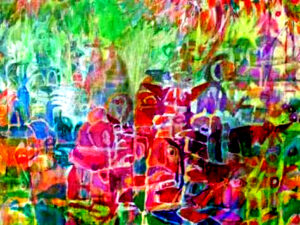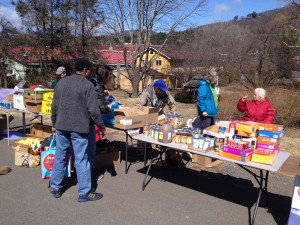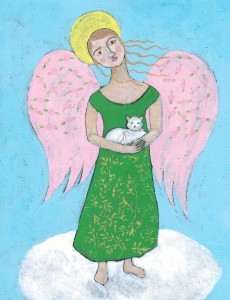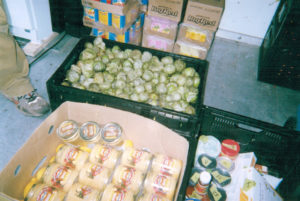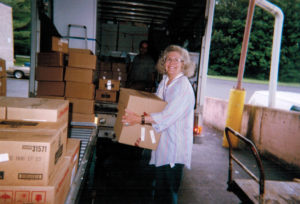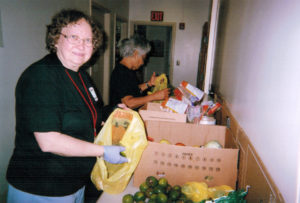Politicians – the Season Begins Again!
The political season begins again. In Woodstock, the politicians come calling. They knock on the door – their smiles open, their outfits perfect.
And, they don’t want to hear any questions – not from me, anyway.
I answer the door and listen to their message. I’m waiting to pounce, really. Because, I know they don’t know anything about hunger in our area.
And, I do know about hunger in our area.
The minute I open my mouth, they start to run for it.
Well, not so fast politician. Not so fast. You can’t leave my front door without taking a copy of one of my books with you.
I really know more about the economics of this area than they know. I know about children who go to school hungry. I know about families who routinely choose between food and transportation, food and housing, food and healthcare.
The politicians know their dance is up for today. Because I know about homelessness. I know the difference between shelter and housing.
Woodstock is a community where people working here come from somewhere else.
Each year, I figure that some kind of message will go out and no politicians will knock on my door. I’m wrong every year.
So, I sit – waiting to pounce.
Lord, I apologize. I simply can’t help myself. Someday, I’m going to apologize and know its the last time because I won’t act this way next time. I’d be lying to you now, Lord, if I even pretended that I won’t do it again.
I love pouncing on these people who knock on the door. I love to tell everyone how hard it is for the elderly to get food when their shoulders and knees don’t work anymore. I love to talk about friends I have who don’t drive anymore and who live in a food desert.
Lord, as seniors, we routinely pay more, get less, and do without. The without part comes because we’re outliving our savings.
I feel like everyone needs to know these things. How are the politicians going to know about them if I don’t tell them? I’ve convinced myself that its part of my job as a food pantry volunteer.
Food pantries are mostly hidden services. People shopping at one certainly don’t tell anyone where they get their groceries. And, the volunteers don’t talk either.
In the beginning, I was bothered about this but I’ve come to realize that food pantries are places where miracles happen. And, miracles are much easier if no one knows about them.
Lord, on behalf of everyone who shops or volunteers at a food pantry, I offer gratitude for the many miracles You perform on our pantry day.
And, Lord, thanks for sending these politicians over to my house every voting season. I love to pounce and then send them away with my books.
Thank you again Lord. I offer gratitude on behalf of everyone who shops or volunteers at a food pantry.
Amen
Thanks for reading this article! If you enjoyed it, check out some of the older articles. Hunger is not a Disease is an fascinating story about hunger in a small town food pantry. This blog has been relating stories and events for ten years!
I’m amazed when I read this. I never, in my wildest dreams, thought I would be writing about hunger and homelessness for over 10 years. And yet, here I am, plugging away!
What a journey this blog has been – and continues to be.
What was I thinking?
Please share this article with your friends and family. Forward it to your preferred social media network and post it on Facebook even.
Check out my books on www.thurmangreco.com. The website is being repaired so contact me at thurmangro@gmail.com to purchase one or more of the books.
Let’s Live with Thurman Greco is a program aired weekly on Woodstock’s own educational TV channel 23. This show is an informative, upbeat hour with no rehearsals. Some segments support the blog information and highlight Reiki Therapy, Hand and Food Reflexology, and other wellness subjects.
Guests are various people whose lives have brought them to Woodstock for a day, a week, an hour, a decade, or more. I can truthfully boast that guests report they enjoy the experience.
Let’s Live has been running for over 15 years with an occasional intermission now and then.
Enjoy interesting and fun programs while getting a peek into Woodstockers being themselves. Search “Let’s Live with Thurman Greco” on YOUTUBE and check out the ever growing list of videos.
Please contact me at thurmangreco@gmail with comments or questions.
Thank You for Bringing HOPE
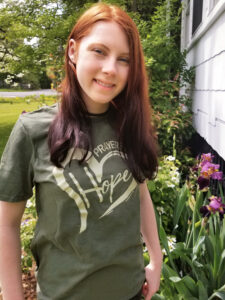
Thank you for your support throughout the year and for the holidays.
I’m hoping that you can continue to include your “feeding the hungry” activities throughout the coming year! Your donations translate into hot meals, safe shelter, and a reminder to the hungry and unhoused that there are those out there who care.
Your generosity changes lives. Food pantries, soup kitchens, and shelters restore people’s lives.
It takes all of us to support those in need.
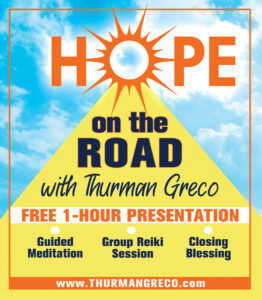

Do you have a crowded closet? Winter clothing needs include:
warm coats
foot wear – especially boots
warm gloves and hats
jeans and pants
sweatpants
long underwear
The items most often resquested: socks
– – – – – – – – –
Thanks for reading this blog post. Please share it on your preferred social media network. Forward it to your friends and relatives.
Find more information about hunger and homelessness on “Let’s Live with Thurman Greco” on YOUTUBE.
www.thurmangreco.com
www.hungerisnotadisease.com
THANK YOU FOR CARING!

Do you want to learn more about hunger and homelessness in America? You can find more info in previous posts on this blog.
Grief in the Pantry Line

When I think of grief, Lemon Balm Betty surfaces from my memory banks. She ran around the parking lot outside the food pantry as fast as her feet would carry her, yelling at the top of her lungs “Thurman Greco is a f*** a****!
She carried anguish and anger like twins. When anger bubbled up and yelled and yelled, anguish followed.
“I don’t think she’s ever going to smile again.” I thought to myself whenever I saw her run her circle around the parking lot.
One day she brought an armload of peppermint. I put it out in the pantry for shoppers.
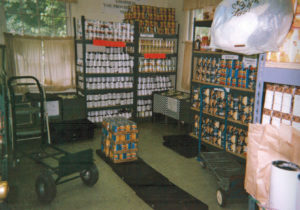
When she saw her donation in the fresh produce section, a smile lit up her whole being. Finally!
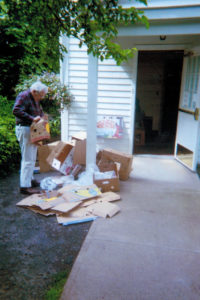
In days past, we all looked for security and some of us found it.
But then, things spun out of control and our lives began over in the pantry.
Despair was unavoidable.
Fearful shoppers were uncomfortable and felt hurt in their hearts, clear down to their first chakras.
When we realized how vulnerable and insecure we were, distress happened. .
No one talked about it much, but people working and shopping in a pantry lost a lot: jobs, family, (not to mention the house and everything in it), friends, self-respect, self-love.
They lived an ongoing series of losses.
In the pantry, we all just ducked our heads and pressed on. Hungry people lived with the specter of what if:
What if I hadn’t lost my job?
What if I hadn’t come down with cancer?
What if I hadn’t lost my car?
It was all loss: a lost job, the death of a loved one, a foreclosed home. Loss triggered feelings and it was all incredibly lonely.
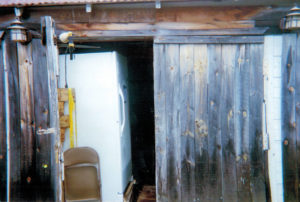
Occasionally I saw people crying in the pantry. And, truth be told, I cried in the pantry a few times as well.
Sometimes I cried silently. Once I wailed loud, earth shaking, tears. I was intensely afraid the pantry would shut down. I knew there was no other place to feed the people.
I don’t remember what made me become so emotional that day. The reason I cried escapes me now because why I sobbed wasn’t important.
More important, the pantry was a safe place for us all or no one would have shed a tear. Safety allowed me to let my guard down for just a moment to shed tears I needed to cry.
This I do remember: I cried tears for us all in the building that day as numbness wore off.
Wounds needed tears to heal. Once this happened, we tried to move forward again. Drugs numbed and masked the pain, but there were no pills to heal wounds.
This journey confronted traumas, and finally resolved things lost. A despondent person moved forward never leaving grief behind. The pain and the journey relied on emotional suffering.
Weekly trips to the pantry left us all with unfinished business. It was impossible to lose so much with a clean break.
Travelling to the pantry, our lives were up and down. We carried happy and sad memories with us in the pantry room. Disaster was the new normal.
Tears paved the way for the good luck we experienced after the feelings of sadness and loss diminished.
Sadness had to be experienced.
The journey attracted spine and joint problems, respiratory problems, irritable bowel syndrome, bronchitis, asthma, pulmonary issues.
Our situations needed to be experienced honestly. Denying grief got no one anywhere. I was honest with myself about the sorrow I felt for the pantry.
If I hadn’t been, I would have lost it to those who didn’t approve of me and the hungry people the volunteers fed.
We each faced a challenge: How to figure out who we were at the moment and who we hoped to be in the future.
In the middle of all this, we carved out a place in the new reality we found. Then we could each define who we were in our new surroundings and in the community.
When we wrote our new stories and tried on our new identities, we saw the past, the present, and the future blended together.
The new stories brought depended on newly discovered talents and strengths. A new voice surfaced. I felt it drowned out the negativity. When this happened, we were ready for a new life.
Maybe.
What about a new home, family, pet, job, car? We all had different relationships to repair and rebuild.
Each person working in the pantry or walking through the shopping line felt loss differently.
This was our spiritual work. Some were lucky enough to move on to a different town, a job, a different family.
But nobody walked away from this loss , pain, and grief. So, it was okay when we stayed in town together as we picked up the pieces of our lives.
I recognized this new voice whenever I heard “I won’t be coming again. I got a new job and I’m moving on.”
Things didn’t always make sense because the voice was filled with anxiety, struggles, and disappointments. In the end, it all came down to discovering what worked and what didn’t.
Each of us saw this uniquely.

Rita lived in the Saugerties/Palenville area before Hurricane Irene. That storm cost her everything. One day her life was normal and the next she had nothing.
The most anyone could say about Rita was that she was homeless.
A mutual friend, Lorene, found Rita a worn-out pickup somebody couldn’t sell or even give away.
Until I looked closely at it, I didn’t even know what color it was.
I knew what color the tires were, though: slick and bald.
Rita got the pickup and the key that went with it. She put the key in the ignition and turned it. The motor came to life. It got her to the gas station. Hurrah!
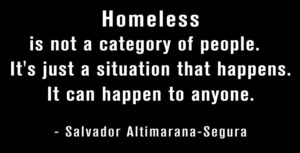
She began her life over by doing anything that anybody needed to have done for $10 an hour and lunch.
She cleaned out flooded houses and sheds. She hauled trash to the dump. She used her computer skills when somebody needed administrative savvy.
Her clothes came from Family of Woodstock.
She rented a room in somebody’s house and was finally not sleeping in the pickup.

Whenever she worked in Woodstock on Wednesdays, she shopped at the pantry.
I’ll say this about Rita. She never grumbled. With a smile on her face, she always acted as if the pantry food was the best she had ever eaten.
And never, not even once, did she complain about the ancient jalopy pickup rig she drove around.
As far as I could tell, she never lost hope. Without hope, I don’t think she would ever have made it to the other side – wherever that was.
I never once asked her how she got the pickup repaired and I never even looked near the inspection sticker. Frankly, I was afraid to ask. I was afraid she would tell me.
Truthfully, Rita was no different from any of the rest of us shopping and volunteering in the pantry.
She had to figure out how much of her past she could rebuild. And she had to figure out how much of her past she was simply going to close the door on as she moved into the future after Hurricane Irene.
Rita gave up much beyond her material possessions. She gave up everything that she felt stood in the way of a successful future. For Rita, quitting was something she couldn’t afford.
She gave up rear vision. Looking into her past simply didn’t happen to Rita. She gave up bitterness and seeing wrongs. This meant she gave a person a second chance, and even a third if they needed it.
She gave up waiting and putting off something beccause the stars and planets weren’t properly aligned. She gave up criticism. This included self as well as others.
Rita was the right person in the right place in the right job to be able to unfold her path in front of her. She carried on each day as if she truly believed it was better than yesterday.
She walked as if blessings were all around her.
Each day, every day, Rita risked whatever was necessary to rebuild her life. Rita embraced the future while renouncing her past. She never quit.
Rita was our poster child. She found meaning each day, even in the worst situations and the most inhumane conditions.

Thank you for reading this article. Please refer it to your preferred social media network.
Share it with your friends.
Because of its spirituality, this article could fit easily in www.reflexologyforthespirit.com. Because of the food pantry setting, here it is in www.hungerisnotadisease.com.
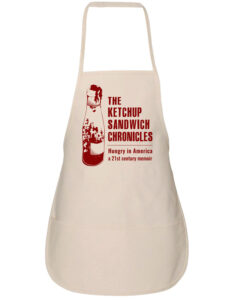
![]()
Thanks
Thurman Greco
I got an appeal letter from the Capital City Rescue Mission Today!


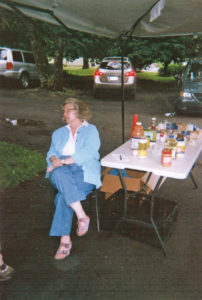
I got excited!
A letter from the Capital City Rescue Mission sent me a thank you note! Just 2 weeks ago, they sent me an appeal letter, complete with return envelope.
And, today, I got a letter from Covenant House.
So what, you say.
Well, so that. That’s what!
When I managed the local food pantry here in Woodstock, I sent out appeal letters every year to a few thousand people. I never, ever, saw an appeal letter from another food pantry or soup kitchen or halfway house.
My letters weren’t nearly so nice as the ones I got from the Capital City Rescue Mission or Covenant House.
The pantry appeal letters were hand addressed, printed on a copy machine and hand folded.
Our return address on the envelopes appeared compliments of a volunteer hand-stamping each one individually. A volunteer got the return address stamp at the Catskill Art and Office for less than $25.
Our mailers went out each year reeking of poverty. No professional letterhead. No nice paper. They were just an appeal from a group of people who needed to keep going from day-to-day.
But, they worked. Those letters and the follow-up thank-you notes brought in enough money to meet our needs. We always had enough for gas and sandwiches for the staff on the monthly food pantry stocking day.
When Guy dented the fender in his car in our parking lot, we had the money for repairs.
When we showed up in the food pantry one day to distribute food, there were no working lights in the basement of the church.
I never quite figured out what happened. But this I do know: Richard Spool arrived in just a few minutes and dealt with the problem. We had enough $$$ to get all the parts we needed at Houst.
And, this I do know: The hungry people were fed, the lights were fixed, Richard saved the day, and the account still had a few dollars left.
But, now, back to the story.
Well, today I did. The appeal mailer came in about 2 weeks ago and I quickly sent a check and a copy of my book (for encouragement).
Today I got a thank-you with another self-addressed envelope from the Capital City Rescue Mission. (I think I’ll send another copy of my book for them to share. ) I’m going to send along another check. I’m anxious to see how this plays out.
Meanwhile, if you are a food pantry, soup kitchen, halfway house and need money, you can learn all my secrets starting on page 196 of my book, “I Don’t Hang Out in Churches Anymore”. I held nothing back. If you read this information, you’ll have the recipe for fundraising success.
In my heart, I want every pantry, soup kitchen, and halfway house to be rich enough to feed everyone who needs the food. I want the food to be top quality – the best.
And, I want every pantry to have enough $$$ to fix the cars and trucks and the lights in the building.
I learned these secrets at Rowe in Vermont when Kim Kline gave her annual talk.
If you feel you can’t take my word for all this success, get Kim Kline’s books and read them. Or, better yet, attend one of her weekends (when the pandemic is over).
Remember, in our country, there is no excuse for anyone to go hungry.
If you’re reading this post and you don’t work for a pantry or soup kitchen, you don’t have to wait for a mailer. All you have to do is contact a food pantry and make a donation.
You don’t have to send a check. If you want, you can hold a food drive and then haul over all the food you gathered. The important thing is that there are many ways to support those who feed the hungry.
And, lately, there are more and more hungry people than we ever thought possible. Your help and support will be appreciated.
Thank you for your generosity and thank you for reading this article.
If you liked this blog post, please refer it to your preferred social media network.
Thanks again!
Thurman Greco
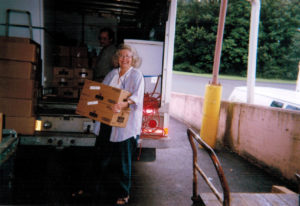
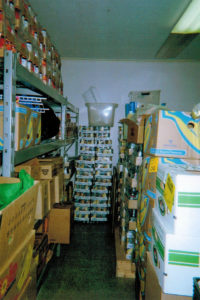



Miracles – Because Hunger is Not a Disease

Miracles happened in the food pantry. It took me a while to realize this and then it took another while to accept that such a thing could happen in the basement of a small town church in Upstate New York.
I sneaked miracle stories in on the blog posts. I sneaked them on the pages of “I Don’t Hang Out in Churches Anymore”. Finally, I gave them their own pages – as much as I had the nerve for anyway, in a short book “Miracles”.
Research on miracles taught me some things.
I learned that miracles often include weeping statues, broken legs healing straight, relics, stigmata, and visions. The pantry miracles included none of those things.
Our miracles never really cured anyone. I never saw a statue weep, and no one came down with stigmata.
Instead, they showed us all how to grow and love and forgive. It was giving away the food that was the tip off for me.
As far as I can tell, the food pantry miracles were not the result of prayer.
God just showed up and brought food. Once he came disguised as a fireman. Each miracle was a complete surprise, a unique and different event. God came when the pantry shelves were bare and the lines were long.
I don’t think the miracles proved that any of the shoppers or volunteers were more faithful than anybody else in town. Frankly, I think that some of us saw the miracles as coincidences or something.
However they were seen, these events made an impact on a small number of people who saw them as they happened.
The clincher for me occurred when I finally realized and accepted a few basic things:
Carloads of food never showed up when we didn’t need it.
Boots never appeared on the shelves disguised as toothpaste in the summertime.
Nobody ever brought a handful of nails to fix the barn when the wall wasn’t falling.
Two books appeared on my desk out of the ethers: “Miracles” by Tim Stafford and “Looking for a Miracle” by Joe Nickell gave a feeling of legitimacy to my thoughts and memories.
Because of Tim Stafford, I wrote my book entitled “Miracles”. He was direct about a few things – one of them being that people should not spread “miracle gossip”. Because of his feelings about what he called “miracle gossip”, I’m compelled to relate the pantry miracle stories.
To sneak them in blog posts does not do them justice.
Thank you for reading this blog post. Please refer it to your favorite social media network.


Thurman Greco
It’s Vacation Time!
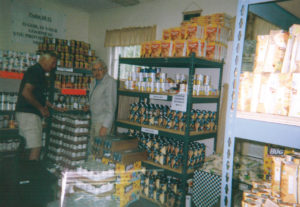
Your vacation time is here! It’s your last chance to get a break this summer. That means it’s time to go to the beach – to the mountains – to the city – ANYWHERE!
What do you have to do to get away? Well, first, find a place to go. Second, pack your bags.
FINALLY, drop off loads of food to your neighborhood food pantry before you take off on your vacation..
August is the most challenging month of the year for food pantries because it’s the month with the least amount of food available at the food bank. Food pantries get most of their food from donations and very few people donate in August. And, sadly, this carries right through to September. September brings school openings with parents getting ready for school lunches. Food pantries are often empty.
It’s my opinion that people don’t donate food to food pantries in August because they’re focused on their own activities: vacation, getting kids ready for school.
But, your neighborhood food pantry doesn’t have to be empty. There are things you can do. You can organize a food drive in your neighborhood and take the food to the food pantry. You can keep the food flowing right through to October.
Thank you in advance for thinking of things you can do for your food pantry during the leanest months of the year.
Please refer this article to your preferred social media network.
Thurman Greco

Author’s Note – “Ketchup Sandwich Chronicle”

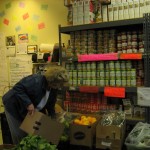
“Ketchup Sandwich Chronicles” is about the spiritual journeys of pantry shoppers and volunteers experiencing hunger and incredible change as they traveled toward renewal and reclaimed lives. This story is, as yet, unknown to many people because hunger as it exists in food pantries, soup kitchens, shelters, is still a taboo subject in our country.
Events and conversations in this book took place over a period of several years when I coordinated the Good Neighbor Food Pantry in Woodstock, New York.
Whenever possible/practical I reviewed material with people who helped reconstruct events, chronology, and dialogue. Based on these reviews and my own notes, some of these incidents were compressed, consolidated or reordered to accommodate memories of everyone consulted. This memoir was edited and rearranged over many drafts in an effort to be as accurate as possible.
All dialogue is based on my memory and the notes I took. The names of most of the characters (mainly, the shoppers) were changed. The names of some were omitted. Even so, there are no composite characters in this memoir.
If you read a sentence, page, paragraph or even a chapter that you feel is outrageous or untrue, it is nonetheless very real. Everything written in this book actually happened. It’s my story.
Peace and food for all.
Thurman Greco
Woodstock, New York
Thank you for reading this article. And, thank you in advance for reading this new book. I’ll be sharing it with you in the coming months. I hope you enjoy it. Please share it with your favorite social media network.


